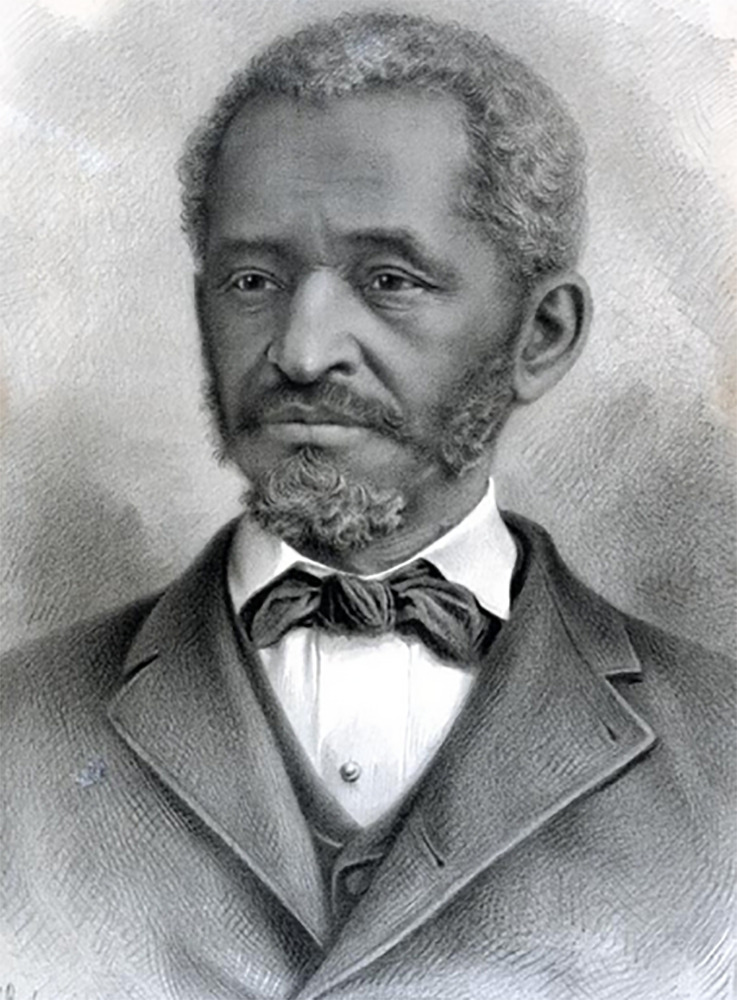Lewis Hayden
Abolitionist, Politician and Community Leader

Lewis Hayden was born into enslavement in Lexington, Kentucky on December 2, 1811 in the household of the Reverend Adam Runkin, a Presbyterian minister.
As a child, young Hayden witnessed the horrors of enslavement first hand observing the sale of his siblings at auction and the physical violence and brutal torture enacted on enslaved persons of African descent by their captures.
More specifically, Hayden recalled many years later to Harriet Beecher Stowe, the highly influential and important author of the 1852 book Uncle Tom’s Cabin, that his mother, in one of her reoccurring fits of insanity, once tried to kill him so that he would not have to suffer in slavery.
Nevertheless, young Lewis married his first wife while enslaved. They had two sons, one of whom died shortly after birth. The sale of his first wife and son by his master Henry Clay, one of the future architects of the 1850 Fugitive Slave Act, which Hayden later fought so hard to undermine, separated Lewis from his family in the 1830s.
In 1840 he married his second wife, an enslaved African American named Harriet Bell (c.1811-1893). Several years later, his owner leased him to Lexington Kentucky’s Phoenix Hotel as a waiter for the racing season. Expecting to be sold and their family separated, the Haydens planned an escape.
The abolitionist Delia Webster introduced the Haydens to Calvin Fairbank, a ministerial student and fellow Underground Railroad activist, who hired a carriage and driver as part of the escape plan. Lewis and his wife Harriet posed as servants, “or passed as white lady and gentleman, veiled and cloaked.” Harriet’s son hid under the carriage seat. On a cold and rainy night, the group traveled from Lexington to Ripley, Ohio, where they were aided by local abolitionists including the Reverend John Rankin.
After going first to live in Canada, then Detroit, Michigan, and then to New Bedford, Massachusetts, the Haydens finally chose to reside permanently in Boston. As a major center of the Abolition Movement and home to one of the most active Free Black communities in the country, Boston was the right place for Hayden to help lead in the struggle against enslavement and assist those seeking to escape it.
The Haydens quickly established themselves as prominent activists and leaders in Boston. Their home in the Beacon Hill neighborhood became a boardinghouse and a stop on the Underground Railroad. (This house is now a private residence and is not open to the public.)
In addition to his work on the Underground Railroad, Lewis Hayden participated in many other activities to promote freedom and justice for all. For example, during the antebellum period he helped lead the struggle to desegregate Boston’s public school system.
Hayden also helped to recruit African Americans to join the 54th Massachusetts, one of the first all-African American units to fight for the North during the American Civil War. One of the recruits was Charles Gammon of Springfield, Ohio, whose parents' home was a stop on the Underground Railroad. The effort of these soldiers is recounted in the 1989 film, “Glory.” (The Gammon House is now a small house museum devoted to the family's story.)
Following the Civil War, Hayden served as one of the first Black members of the Massachusetts General Court, an elected representative in the state legislature, where he served on the Committee on Woman Suffrage and advocated for legislative measures to provide women with the right to vote.
Lewis Hayden died on April 7, 1889. His story serves as a powerful reminder to us all that freedom is a constant struggle.
Images

